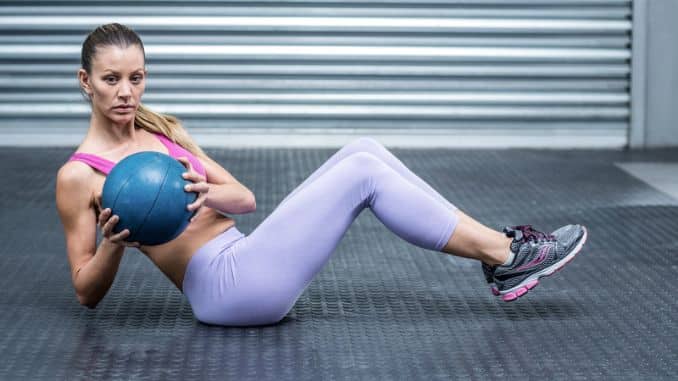
Are you tired of feeling weak or unstable on your feet and want to have exercises to make your muscles stronger? Or do you struggle with knee pain or discomfort during physical activity? Our knees are incredibly important to our overall health and mobility. They are one of the largest and most complex joints in our body, connecting our thigh bones to our lower leg bones. Strengthening the muscles around your knees can greatly improve your overall stability and mobility. And the good news is that it doesn’t have to be complicated or time-consuming. In fact, with just four simple moves, you can start building stronger, more resilient muscles in no time.
So let’s dive in and discover these simple yet effective exercises to make your muscles stronger together with your knees. Whether you’re a fitness enthusiast or simply someone who wants to move more confidently and easily, these exercises are a great place to start and can help these exercises to make your muscles stronger.
1. Leaning Exercise
For this exercise, you can use a chair, kitchen counter, or anything stable and secure that can support your body weight for this learning exercise.
Begin in an upright standing position facing the chair. Place your hands on the chair’s armrest, then move your feet back to increase the angle of your body. Maintain good alignment with your head, shoulders, hips, and toes. Contract your core, drive one knee towards your chest, and then extend your leg back. Return to the starting position and repeat the movement on the opposite side. Start with 1 set of 5-15 repetitions on each side.
 |
 |
2. Hamstring Rollers
For this exercise, you can use the stability ball, rolling chair, or anything that will allow you to move during the Exercise.
Begin in an upright sitting position on the stability ball, with your feet flat on the floor and maintaining good alignment in your upper body. Tighten your core and press your heels against the floor as you push your legs straight, rolling the ball back. Roll back in to return to the starting position and repeat the movement. Start with 1 set of 5-10 repetitions.
 |
 |
Alternative Exercise:
Begin in an upright sitting position on the stability ball with your knees bent and feet flat on the floor, maintaining good alignment in your upper body. Place one hand onto something stable like a table or chair for support. Straighten one leg in front of your body, ideally parallel to the floor. Tighten your core and push from your supporting foot to roll yourself back, keeping your raised leg straight. Roll back in to return to the starting position and repeat the movement. After several repetitions, repeat the movement on the opposite leg. Start with 1 set of 5-10 repetitions on each side.
 |
 |
This is an excellent exercise to start getting some activity in the hamstrings. For those who have difficulty bending their knees, kneeling or descending stairs, strengthening the back of the thighs is really important because the hamstrings help to change how your knees feel when you get some compression at the front of the knees
3. Chops
Begin in an upright position beside the stability ball or anything you can hold on to for support. Wrap the resistant band around your legs, just above your knees. Take a step back with one leg, then lower your back knee to the ground. Hold the band on your front knee, then lean your hips forward while maintaining good alignment with your head, shoulder, and hips. Lean back to the center and lift your front knee towards the sky. Return to the starting position and repeat the movement on the opposite side. Start with 1 set of 5-10 repetitions on each side.
Alternative Exercises:
 |
 |
Alternative 1
Begin in an upright kneeling position with the stability ball in front of your body. Move into a forearm plank position, resting your elbows on top of the stability ball and maintaining good alignment with your head, shoulders, hips, and toes. Tighten your core and bend your knees, bringing your hips back over your heels. Straighten your legs to roll back in forward, tightening your thigh muscles at the end position. Repeat the movement. Start with 1 set of 5-10 repetitions.
 |
 |
Alternative 2
Lie on your stomach on the stability ball with your legs shoulder-width apart. Place your hands on the floor in a straight-arm plank position, maintaining good alignment with your head, shoulders, hips, and toes. Tighten your core and bend your knees, bringing your hips back. Straighten your legs to roll back in forward, tightening your thigh muscles at the end position. Repeat the movement. Start with 1 set of 8-12 repetitions.
 |
 |
Alternative 3
Move into a straight-arm plank position, maintaining good alignment with your head, shoulder, hips, and toes. Contract your core, then push your hands back to lower your knees to the floor. Relax and return to the starting position. Repeat the movement for as long as you need.
 |
 |
4. Kneeling
Begin in an upright kneeling position, maintaining good alignment with your head, shoulders, and hips. Shift your hips back to rest your seat on your feet. For some who may have difficulty kneeling, place a pillow between your seat and heels to bring a little elevation. Hold this position for a few seconds. Relax and return to the starting position.
Kneeling is a lovely thing to do because it provides compression to the front of the knee cap, which assists your cartilage in getting nutrition.
 |
It’s important to remember that when it comes to building strength in the muscles around your knees, you do not want to inflict damage on the joint itself. That’s why these exercises should be done carefully and gradually over time. If the move feels uncomfortable, stop immediately! Instead, make the next move feel more comfortable. As you progress through the exercises, you may need to modify the moves to fit your comfort level. It’s perfectly normal, and you should never be afraid to make adjustments as necessary.
If you have trouble performing one or more of the moves in this workout, reduce the amount of weight you’re using. Remember that when working out the muscles around your knees, you want to start slow and build momentum.

